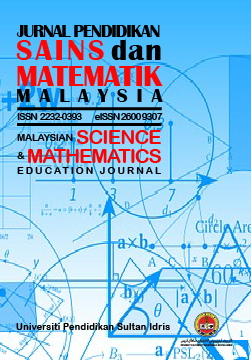ESE Problem Solving model in solving mathematical word problems: A preliminary study
DOI:
https://doi.org/10.37134/jpsmm.vol11.1.4.2021Keywords:
mathematics, problem-solving, Primary mathematics, learning mathematics, innovationAbstract
This study is to examine the impacts of a brand-new innovative ESE Problem Solving Model which theoretical based on the Polya’s (1945) Model problem solving to teach primary pupils tackling the mathematical word problems. There are three systematic and straightforward steps which are extract, synthesis and execute. The researchers employed a quasi-experimental research design in one of the national primary school in Sabah, Malaysia. A convenience sampling technique was used to collect a sample of 31 primary five pupils. statistical package for the social sciences (SPSS) version 26 was used for data entry and data analysis. The results of this study showed that the ESE Problem Solving Model is one of the potentially practical models to help pupils to solve mathematical word problems.
Downloads
References
Ahmad, S., Zinal, Z. T., & Omar, A. (2006). Isu-isu dalam pendidikan matematik. Selangor: Utusan Publications & Distributors.
Siti Rahaimah Ali. (2019). Penyelesaian Masalah dalam Numerasi. Malaysia: Penerbit Universti Pendidikan Idris.
Smoryński, C. (2020). Mathematical problems: An essay on their nature and importance. Springer Nature.
Germain-Williams, T. L. (2017). Teaching children to love problem-solving: a reference from birth through adulthood. World Scientific Publishing Co. Pte. Ltd.
Liljedahl, P., Santos-Trigo, M., Malaspina, U., & Bruder, R. (2016). Problem Solving in Mathematics Education. Springer International Publishing.
Malaysia Ministry of Education (2018). Document Standard Curriculum for Primary Schools: Curriculum Specification, Mathematics primary 5. Kuala Lumpur: Curriculum Development Centre. http://bpk.moe.gov.my/index.php/terbitan-bpk/kurikulum-sekolah-rendah/category/392-dskp-tahun-5
Munirah, G. (2016). Kepekaan nombor, numerasi dan kemahiran berfikir aras tinggi (Kbat) dalam pendidikan matematik sekolah rendah. Pulau Pinang: Penerbit Universiti Sains Malaysia.
Polya, G. (1945). How to solve it: A new aspect of mathematical method. Princeton University
Silver, E. A. (2013). Teaching and learning mathematical problem solving: Multiple research perspectives. Routledge.
Tambychik, T., & Meerah, T. S. M. (2010). Pupils’ Difficulties in Mathematics Problem-Solving: What do they Say? Procedia - Social and Behavioral Sciences, 8, 142–151. doi: 10.1016/j.sbspro.2010.11.020





